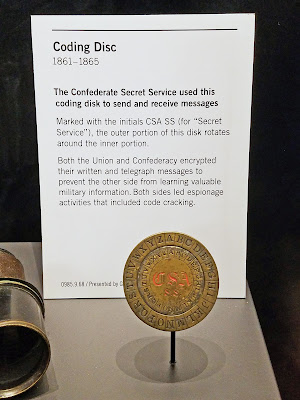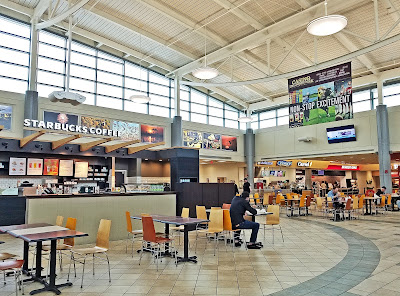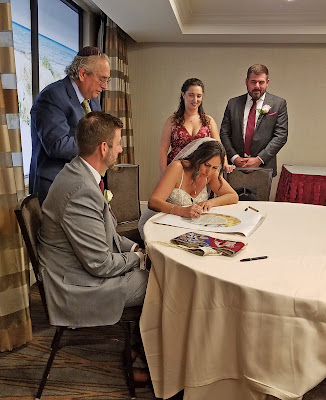One more Tyler Arboretum membership reciprocity opportunity, the American Civil War Museum in the Tredegar Complex, Richmond, VA.
The Tredegar Iron Works is a historic iron works plant that opened in 1837. By 1860, Tredegar was the largest facility in the South. It played a significant role in the decision to relocate the capital of the Confederacy from Montgomery to Richmond. The facility produced iron plating for the first Confederate ironclad warship, the CSS Virginia. It also produced 1,100 artillery pieces during the war. This is about half of the Confederate’s total domestic production.
Union Brigadier General Anderson ordered 50 armed guards to protect the facility after the Confederates left Richmond. He wanted to protect the facility from being destroyed by Confederate soldiers who were ordered to burn the munitions and industrial warehouses. As a result, the iron works is one of the few Civil War era buildings that survived the burning of Richmond.
 |
| The American Civil War Museum with the Tredegar Pattern Building on the left, and the 2019 building of the museum on the right |
 |
| Water wheel |
 |
| Functioning water wheel (KSS) |
 |
| Tamiko, Tad, Abe, and Kent |
 |
| Secession cockades sold like hotcakes (rather like johnny cakes!) in South Carolina after they seceded in 1860, and they featured the palmetto tree! |
 |
| The Confederacy was so confident that the war would be short, that this saying became common |
And in so believing, they did not prepare their population for the trials of war, the many dead, the shortages of food and goods. The civilians of the South suffered more than in the North.
 |
| Sword belt, riding boots and spurs of General Robert E Lee |
 |
| A map drawn on a bedsheet shows details of the First Battle of Manassas (July 21, 1861) |
 |
| General P G T Beauregard signed the map, verifying it as a correct rough skecth of the battlefield |
 |
| A prosthetic arm and amputation saw |
 |
| Slouch hat, Colt 51 Navy revolver, and haversack of General Robert E Lee |
 |
| Forage cap, haversack, field glasses and case of Lieutenant General Thomas J "Stonewall" Jackson |
 |
| Bandolier (as in a strap that cross diagonally across the body) and baldric (in this case, I am assuming it is the cartridge box/container) of a Native American who fought for the Confederacy |
 |
| Pocket Telegraph Relay |
 |
| Field telegraph wire; a first during the Civil War was the use of telegraph communication between the field commanders and military leaders across great distances |
 |
| A Bullet Rosette is the result of two bullets (minie balls) colliding in midair; found on the battlefieeld near the Spotsylvania Court House in Virginia |
 |
| Slouch hat, gauntlets, 1860 US Cavalry saber, LeMat Grapeshot revolver (Army model), and holster of Major General J E B Stuart, displayed on his campaign desk |
 |
| Riding boots of Major General Stuart |
 |
| From top: bonnet made of corn shucks, palmetto cap, and palmetto boater hat |
 |
| Coding disc |
 |
| Twisted rail, also called "Sherman's neckties," prevented rail lines from being easily repaired |
It was said General Sherman's troops set fire only to military installations in Atlanta in order to cut supply lines to the Confederate armies (but fires spread). However, rogue troops may not have followed the Special Orders set by Sherman, and did their own thing, probably setting more fires than needed.
We continued driving homeward up I-95 N.
It was also stated that Sherman's army did not destroy any towns in the path of their March to the Sea. However, they did steal food and livestock, and burned the houses and barns of anyone who tried to fight back. (Confederate armies had to forage for food and livestock as well.) Or did the civilians in the path of Sherman's army burn their own crops and livestock to keep them out of the hands of the Union troops? There is much to consider.
Sherman's army also developed a large following of civilians as he marched to the sea, and these people were often blamed for the pillaging and raping. Having to deal with these followers impeded the progress of Sherman's army.
Today with the 1977 Geneva Conventions, General Sherman would be considered a war criminal. During the Civil War, he operated in a gray area. It was Sherman's intention to do what was necessary to end the war. (We heard that same intention during World War II.)
 |
| Outfit worn by Confederate President Jefferson Davis when he was captured |
 |
| Sunglasses (!) and compass taken from the captured Confederate President Davis; Davis wore sunglasses due to a problem with his eyes after having suffered malaria |
 |
| So in 2010, hand-drying blowers were considered environmentally-friendly as they saved many trees, yet today they are thought to be unhygienic by blowing around more bacteria and germs |
 |
| The interior still looks modern |
 |
| Couldn't complain about cleanliness, so maybe only liberals stop here (go ahead, and slap me: bad joke!) |














































